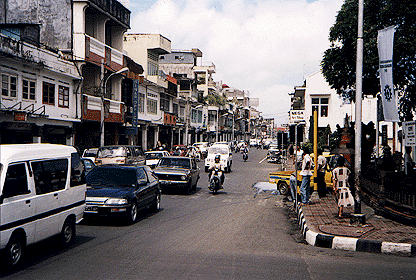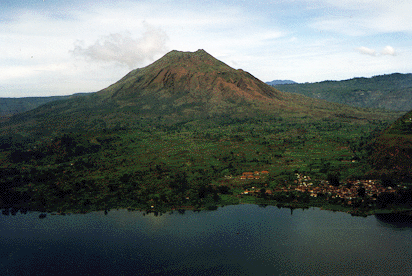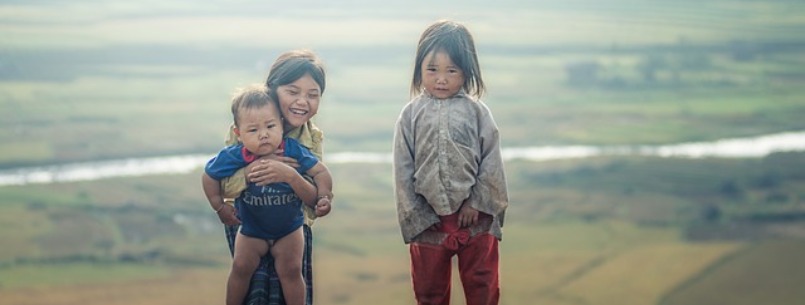Ask anyone to name a perfect tropical island, and chances are they’ll say Bali. This small Indonesian island embodies most Westerners’ dreams of a mysterious, faraway land that’s completely different from where they live. But when weary travelers get off the plane at Denpasar’s Ngurah Rai Airport they are confronted by a reality that often doesn’t match their fantasies.

Denpasar a big city
Denpasar is a city of half a million people, and the beach areas of Kuta, Sanur, and Nusa Tenggara, where the majority of tourists stay, are suburbs of the city. So a flight to Bali will not necessarily put you in the middle of nowhere; you could end up in the middle of a big city with all its traffic and congestion. Denpasar Airport Transfer provides a reliable and quality transportation solution the moment you land at Denpasar International Airport. This is the main airport in Bali, accessible to incoming domestic & international tourists.
Peaceful Oasis
Once at your hotel, however, you will be in an oasis of peace and serenity. Even the biggest, most expensive hotels usually encompass a traditional Balinese carved stone temple and a colorful garden. You can sit by the swimming pool, surrounded by lavishly flowering azalea, hibiscus and frangipani trees, drinking delicious fresh fruit juices and being greeted by hotel staff dressed in traditional Balinese batik and ikat sarongs. You can lounge on the hotel’s private strip of beach, watching the giant waves crash on the reef, and you can swim and snorkel in warm, azure-blue water. At night you can be entertained at your hotel discotheque or karaoke bar, or taken by private minivan to see traditional dance performances. Or you can head to downtown Kuta to nightclubs that play the very latest dance music from Europe and the U.S.
Out of the way
If you’re even slightly adventurous, you can see the Bali that everyone fantasizes about. Away from the tourist beach resorts, you’ll find villages where the people have rarely seen Westerners. The farther away from Denpasar you go, the cheaper the prices, the less English spoken, and the more you feel like you’re on another planet. There are volcanic mountains to climb, untouched forests to hike through, lakes and rivers to paddle on in wooden dugout canoes, and small guesthouses to stay in where the electricity might not always work, and local kids will sit with you and tell you their dreams and what they mean.
Transportation alternatives
It’s easy and cheap to travel around the whole island by “bemo” – the small vans used by the Balinese as public transportation. It can be more time consuming, though, because you may have to change bemos several times to get to one place, and you usually have to haggle over the fare if you don’t want to pay “Harga Turis” or tourist price. The alternative is to charter an air-conditioned van with a driver and guide and be taken to the tourist spots. It’s also possible to rent jeeps and motorcycles for do-it-yourself touring.
Superb walking near Ubud
Top on the list of popular spots in the town of Ubud, a center of arts and culture, with mellow guesthouses, and superb walking possibilities. Outside of town, men and women work in the rice fields, planting, and harvesting. They’re dressed in traditional clothes, and they all say hello to you as you pass by. Old men will stop to talk to you, but you won’t understand them because they only speak Balinese. Children will giggle at you, and you might have to stop while a flock of ducks is herded across the dirt road by a young boy. In secluded areas, you can come upon an illegal cockfight. At any time, you can find small ceremonies and festivals taking place in family or village temples. The only cloud on this otherwise idyllic scene is the dogs. Rural Balinese dogs are evil, barking monsters. They are bone-thin, usually furless, and they particularly like to menace Western hikers.
Lake Batur area hikes
Other parts of the island – the Lake Bratan area, the Bali Barat National Park, and the Lake Batur area – also offer excellent hiking possibilities. At Lake Batur, you can stay in small guesthouses in the village of Toyah Bungkah, right at the foot of the volcano, and either hire a guide to take you up the mountain before the sun rises or simply follow the trails up later yourself. You can hike around the lake, high up in the hills where old women will laugh at your shorts, and you’ll have to pass through bemused families’ farms to pick up the next leg of the trail. Once you make it down to the village of Trunyan, a strange place where the people still follow the old animist practice of not burying their dead, you can hire a local man to paddle you back across the lake in his leaky wooden dugout.

Climbing Bali’s highest mountain
Not far away is Gunung Agung, the highest mountain in Bali. It’s an active volcano that last erupted in 1963, killing more than 1,000 people. Since it is the island’s holiest mountain, locals will advise you to make an offering at the mother temple in Besakeh before you begin your ascent. The trail up this 3,142-metre mountain leads through a dense forest of huge, vine-covered trees, flowering bushes, strange bird sounds, and shadows. Then it leaves the treeline behind, and you’re climbing a vertical slope along slippery volcanic sand. The final ascent to the edge of the crater should not be done in bad weather; you can easily get lost, fall into the crater, and disappear forever (as some unwary tourists apparently have done). But the feeling when you see the immense mountain from far away after you’ve climbed it is unbeatable.
Beaches galore
If beaches are more your thing, but you want something a bit quieter than Kuta, try the old fishing village of Padangbai. The local men still ply the waters with their colourful outrigger canoes, and fresh fish for breakfast, lunch, and dinner is in abundance. On the north of the island is laid-back Lovina Beach, with its black sand, and trips to the reef to visit the friendly dolphins.
You could easily spend a month on Bali, as there is so much to see and do. Whatever your style and budget, you’ll find things to amuse and entertain you. Just remember to do what the Balinese do: get lots of rest and relaxation.
If you go
- There are no direct flights from Toronto to Bali. You can fly on other countries’ national airlines, such as Japan Airlines, or you can fly to Los Angeles, then hop on the Garuda Indonesia 747 which flies direct to Denpasar, with a one-hour stop in Honolulu. The low-season cost of the round-trip flight is about $1,300. (December is considered high season.)
- Hotels: There are small guesthouses in Kuta where a room with a cold-water bathroom will cost you about $10. Or, you can opt for a five-star luxury hotel which will cost you $200-$300 per night. And there’s everything in between.
- Transport: Bemos cost about 25 cents per trip. Chartered vans cost considerably more: $25 for a one-way trip from the airport to Ubud, for example.
- Shopping: Kuta and Ubud are marvelous enclaves of small boutiques and stores selling Balinese clothes, crafts, and jewelry. But bring lots of cash; most of these places do not accept credit cards. There are many money changers where you can conveniently cash your travellers cheques.
- Health concerns: Bali is one of the few Indonesian islands where you don’t have to worry about malaria. Do not drink tap water, however, and make sure the food you eat is freshly cooked. It is extremely hot and humid in the coastal areas of Bali. If you go walking, walk slowly, drink lots of water and fruit juices, and wear a hat.
